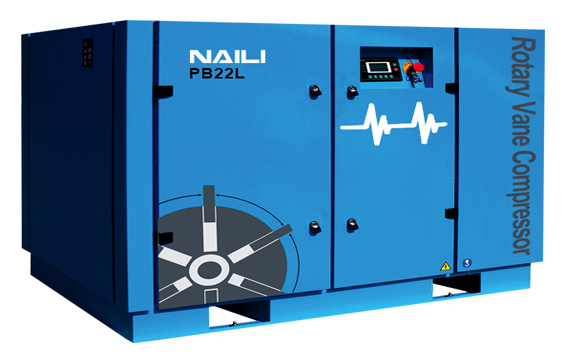
Comparing Vane And Screw Compressors
When a plant manager is selecting an industrial rotary compressor they generally have a choice between two different types of technology; vane or screw. But how do the two compare in terms of efficiency, longevity, and maintenance? Here Martin Chitty, business development manager at NAILI, explains some of the key differences.
Despite the fact that vane and screw compressors were developed at similar times (circa 1950) and are designed to produce the same end result, the two technologies differ quite considerably.
A rotary vane compressor comprises a rotor with longitudinal slots, which house individual sliding vanes. The rotor is offset within a stator (a cylinder), in which it rotates. While the rotor turns on its axis, the vanes are pushed against the stator wall by centrifugal force, and the air is compressed.
In comparison, a screw compressor has two parallel rotors – a male and a female – which engage into each other. These two rotors intersect longitudinally with a critical minimal clearance, and in turn, are fitted into a stator. During rotation, the profiles mesh into each other, compressing the air.
Though both technologies have continually evolved over the last 60 years, the vane is generally regarded as the older of the two, perhaps even being seen as outdated on occasion. However, it shouldn’t be assumed that screw compressors are superior to vane machines and we’d argue that their widespread use has more to do with the screw being cheaper and easier to replicate than a technological advantage.
Energy efficiency
Energy efficiency and the reduction of carbon emissions are a big focus for the industry. For a compressor to operate efficiently, the internal air leakage paths must be kept to an absolute minimum – because air lost during compression equals lost energy. If internal leakages are low, the volumetric efficiency is increased, and the power required for a measured unit of delivered air is reduced.
Vane compressors are volumetrically more efficient because they have minimal internal air leakage. The vanes move freely in their slots but are always in contact with the internal surface of the stator (albeit not directly, due to lubrication), so the air seal is near-perfect. The clearances between the rotor, stator, and end covers are also efficiently sealed by oil that is injected into the stator to lubricate the moving parts and to cool the air during compression.
Meanwhile, screw compressors have an inherent ‘blow hole’, created at the point where the external profiles of the rotors meet, from where air under high pressure returns to the area of lower pressure. Screw compressor manufacturers have tried to reduce the ‘blow hole’, but it is impossible to eliminate it completely.
To compensate for the air leakage, screw compressors run at high speeds. In contrast, vane machines have always operated at low speeds, from a direct drive coupling, which in turn leads to lower power consumption. For example, some of NAILI’s fixed-speed compressors operate at 1,000rpm, whereas the average screw compressor needs to work at 3,000rpm and higher to achieve the same result.
Longevity and maintenance
Providing a vane compressor is looked after in accordance with the manufacturer’s instructions, its operating life can be virtually unlimited. An air end can easily run for 100,000 hours without wear – in fact, some machines have lasted over 200,000 hours in arduous, dusty operating conditions.
So, why are vane compressors so hard-wearing? Firstly, there will only ever be negligible wear on the vanes, because the use of a quality lubricating oil means there is no direct metal-to-metal contact between the vanes and the internal stator wall.
Secondly, and perhaps most significantly, a vane compressor’s rotor shaft is supported by simple white metal bearings, which ensure a long and inexpensive operating life.
Screw compressors, however, can’t offer the same levels of longevity. The rotors on a screw compressor have to operate with high thrust and radial loads while maintaining minimum clearances, so it is necessary for manufacturers to use roller bearings. The recommendation is for these bearings to be replaced as part of the maintenance schedule after as little as 20,000 running hours, but this cost is often overlooked at the time of purchase.
Vane and screw compressors are designed to produce the same end result, but in our opinion, any comparison of the two technologies available will affirm that in almost all instances vane compressors outperform their screw counterparts, especially in the areas of energy efficiency, longevity, and maintenance.
